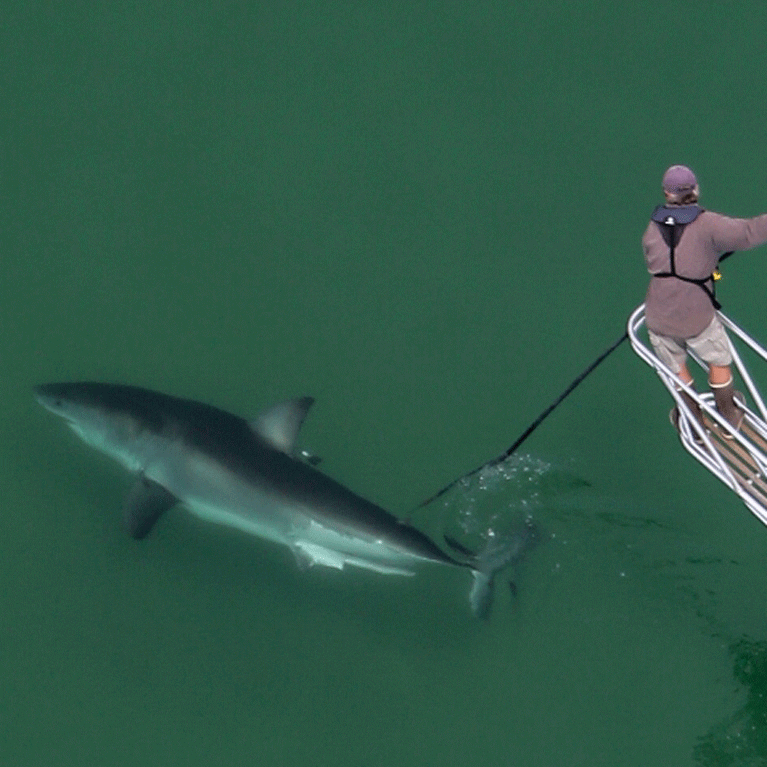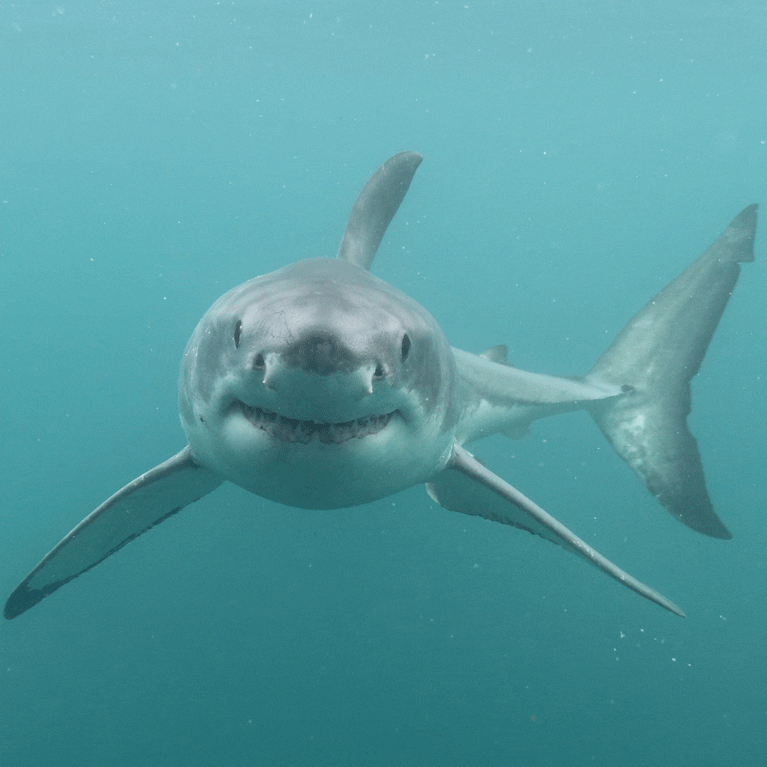Curbing conflict in Cape Cod
As gray seal populations have recovered, the coastal waters off Cape Cod have become the only known aggregation site for white sharks in the western North Atlantic. Greg is estimating seasonal predation rates of white sharks on seals and identifying which environmental conditions are associated with predatory behaviour in order to improve public safety practices.
My intense interest in the ocean, and specifically sharks, started when I was a child. I grew up in a Connecticut suburb as one of seven children and my only exposure to real saltwater was Long Island Sound, which scared the hell out of me as a young kid. As a result, almost all my early experience of the ocean came from reading books and watching television. I was particularly fascinated by the pioneering work of Jacques Cousteau and, like many kids, I was infatuated with sharks. In 1975, Jaws was released and my new hero became the fictitious shark...


Quantifying white shark predation rates on pinnipeds off Cape Cod, Massachusetts, to mitigate conservation conflicts
The general aim of this project is to estimate seasonal predation rates of white sharks on pinnipeds along the coast of Cape Cod, Massachusetts, USA, and identify environmental conditions associated with predatory behavior. This information will be used to improve public safety practices in the region.
Over the past decade, the coastal waters off Cape Cod have emerged as the only known aggregation site for the white shark in the western North Atlantic. The now-predictable presence of this species is linked to the regional recovery of gray seals, which sharks hunt very close to shore. The numbers of reported white shark sightings and interactions with humans are both on the rise, and this has resulted in increasingly dramatic media coverage and prompted local officials to propose lethal control measures. Recent retaliatory culls in other regions reinforce the critical need to develop non-lethal mitigation measures; the low reproductive rate and abundance of the white shark renders it very vulnerable to even low levels of harvest. The results of this study will identify areas and time periods during which hunting white sharks overlap with recreational water users and will provide a science-based strategy for mitigating this conservation conflict.
The seasonal (summer-fall) presence of white sharks off the coast of Massachusetts is now well documented, but the species is considered relatively rare in the greater Atlantic. Over the past decade, the coastal waters off Cape Cod, Massachusetts, USA, have emerged as the only known aggregation site for the white shark in the western North Atlantic. The now-predictable presence of this species is linked to the regional population recovery of gray seals, which are preyed upon by white sharks close to shore (Skomal et al. 2012). These predation events primarily occur in close proximity to popular beaches where people swim, surf, boogie-board, paddle-board, and kayak.
The close proximity of predatory sharks, their natural prey, and humans has become a public safety issue. Indeed, the number of reported white shark sightings and, more importantly, interactions between white sharks and humans is on the rise. Since 2012, there have been several unprovoked attacks by white sharks on three swimmers, two kayakers, and a paddle-boarder. The most recent interaction caused fatal injuries to a boogie-boarder off Wellfleet, MA, in September, 2018; this was the first fatal shark attack in Massachusetts since 1936. As a vacation destination, Cape Cod draws visitors to its coastal waters with its expansive beaches and associated recreational activities. If negative interactions with white sharks continue to grow, impacts to this tourism-based economy can be expected.
These most recent attacks have resulted in increasingly dramatic media coverage and are even prompting some local officials to propose the culling of both gray seals and white sharks (e.g., https://boston.cbslocal.com/2018/09/17/cape-cod-culling-seals-shark-attack/). It is well-established that these kinds of removals do nothing to reduce negative interactions between sharks and humans and can only have detrimental impacts to the ecosystem. The white shark aggregation off the coast of Cape Cod is one of only a handful of “hotspots” in the world and is unique along the east coast of the US. As such, the state of Massachusetts and, in particular, the towns on Cape Cod are faced with a growing conundrum as political pressure mounts to take action to protect the public at beaches.
The recolonization of Cape Cod by the gray seal and the subsequent development of a seasonal white shark aggregation is a relatively recent phenomenon that has occurred in the last decade. We know very little about the predatory strategy of the white shark in this region, although it has been studied at aggregation sites in other parts of the world. Hence, intensive research on the local movements and behavior of white sharks while in Cape Cod waters is warranted. Specifically, we need to know where, when, and how these sharks hunt their pinniped prey, the frequency of feeding events, and environmental factors that drive the behavior of these animals. We believe the extent to which sharks mistake humans for seals is tightly linked to their predatory strategy.
For the last 10 years, we have examined the fine- and broad-scale movements and the regional abundance of white sharks using a variety of tagging technologies including acoustic and satellite-linked tags. In doing so, we now know when and where white sharks are most abundant in Massachusetts and, specifically, around Cape Cod. Building on this foundation, we will deploy state-of-the-art technology to examine and to quantify the predator-prey relationship between white sharks and gray seals in the western North Atlantic. We hope to not only define the ecological role of the white shark in this region, but also identify areas and time periods during which predatory white sharks overlap with recreational water users so as to provide a science-based strategy for mitigating potential conflicts.
- Identify and describe predatory attempts by white sharks on pinnipeds using accelerometer tags. Behavioral classification models based on acceleration-derived metrics will be developed and validated using video footage from tag-mounted video cameras. Tags will be deployed throughout the peak period of shark abundance to investigate seasonal variation in predatory behavior.
- Quantify pinniped consumption rates for individual white sharks in the waters off Cape Cod. This will be accomplished by integrating the frequency of predation attempts and available diet data into the bioenergetics model to construct several scenarios to estimate predation rates required to sustain activity levels of individual white sharks.
- Quantify population-level pinniped consumption rates. Abundance estimates from an on-going white shark mark-recapture study being conducted off Cape Cod will be used to estimate total potential pinniped predation mortality. This information will be used quantify the overall role of the white shark as the apex predator in the region.
- Identify relationships between the frequency of predation attempts and water depth, temperature, light level, hour of the day, tide stage, and moon phase using statistical models. Identified relationships will be used to develop a predictive model to identify risks to recreational water users and to improve public safety guidelines.

